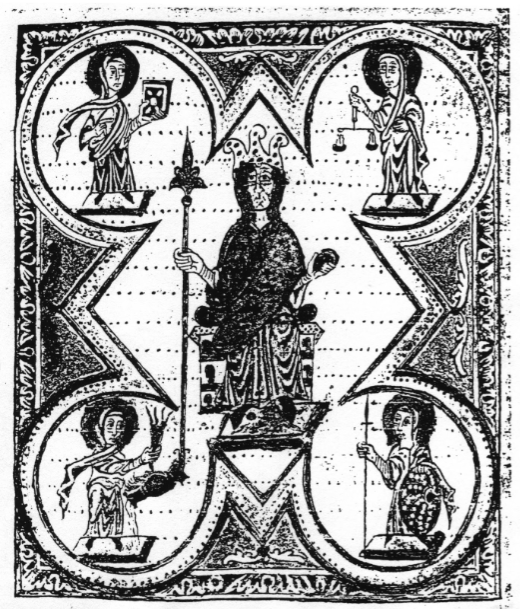The concept of cardinal symbols is a fascinating topic that has intrigued scholars, artists, and spiritual seekers for centuries. These symbols represent fundamental aspects of existence and often relate to cardinal directions, which are North, East, South, and West. Each cardinal symbol carries its own unique meaning and significance, influencing various cultures, religions, and philosophical systems around the world. In this article, we will explore the intricacies of cardinal symbols, their meanings, and their applications.
As we dive deeper into the world of cardinal symbols, we will uncover how they are utilized in various fields, including astrology, geomancy, and even navigation. Understanding these symbols can provide valuable insights into our lives and surroundings. By the end of this article, you will have a comprehensive understanding of what cardinal symbols are, their historical context, and how they can be applied in modern-day life.
Whether you are a curious beginner or someone seeking to deepen your knowledge, this guide will serve as an essential resource. So, let’s embark on this enlightening journey exploring the world of cardinal symbols.
Table of Contents
- What Are Cardinal Symbols?
- Historical Significance of Cardinal Symbols
- Cardinal Directions and Their Meanings
- Cardinal Symbols in Astrology
- Cardinal Symbols in Geography and Navigation
- Cardinal Symbols in Spirituality and Religion
- Modern Applications of Cardinal Symbols
- Conclusion
What Are Cardinal Symbols?
Cardinal symbols are representations that embody the essence of the four cardinal directions: North, East, South, and West. These symbols serve as foundational elements in various systems of understanding the world, whether it be through spiritual practices, navigational techniques, or cultural traditions.
In essence, cardinal symbols help us to orient ourselves both physically and metaphorically in the universe. They represent stability, direction, and the cyclical nature of life. Understanding these symbols is crucial for those who wish to explore deeper philosophical or spiritual concepts.
Historical Significance of Cardinal Symbols
Throughout history, cardinal symbols have played a vital role in various cultures. Here are some key aspects:
- Ancient Civilizations: Many ancient cultures, including the Egyptians and the Mayans, utilized cardinal symbols in their architecture and mythology.
- Navigation: Sailors and explorers relied on cardinal directions to navigate the seas, leading to the discovery of new lands.
- Religious Practices: Different religions have invoked cardinal symbols to represent divine aspects of existence and to guide spiritual practices.
Cardinal Directions and Their Meanings
Each cardinal direction carries its own significance and meaning that can vary across cultures:
North
North is often associated with wisdom, stability, and the element of Earth. It represents the cold and dark aspects of life, as well as introspection and reflection.
East
East symbolizes new beginnings, enlightenment, and the element of Air. It is often associated with sunrise and the start of a new day.
South
South is linked to warmth, passion, and the element of Fire. This direction often represents growth, creativity, and the flourishing aspects of life.
West
West signifies endings, introspection, and the element of Water. It is often associated with the setting sun and the contemplation of life's cycles.
Cardinal Symbols in Astrology
In astrology, cardinal signs are crucial; they represent the initiation of seasons and are associated with leadership and action. The cardinal signs are: Aries (Fire), Cancer (Water), Libra (Air), and Capricorn (Earth). Each sign embodies the characteristics of its element and direction, influencing individuals born under these signs.
Cardinal Symbols in Geography and Navigation
In geography, cardinal symbols guide individuals in understanding topography and navigation. Maps typically use these symbols to help travelers orient themselves. Understanding cardinal directions is essential for effective navigation, whether on land or at sea.
Cardinal Symbols in Spirituality and Religion
Many spiritual practices incorporate cardinal symbols into their rituals. For example:
- Native American Traditions: The four directions are often honored in ceremonies, representing the four elements and the four stages of life.
- Buddhism: The cardinal directions are used in mandalas, symbolizing the interconnectedness of all things.
Modern Applications of Cardinal Symbols
In contemporary society, cardinal symbols still hold relevance. They are utilized in:
- Architecture: Many buildings are designed with cardinal orientation to maximize sunlight and energy efficiency.
- Psychology: Understanding one's direction in life can provide insights into personal development and growth.
Conclusion
In conclusion, cardinal symbols are not merely directional indicators; they embody profound meanings that resonate across cultures and historical contexts. Understanding these symbols enhances our comprehension of the world around us and our place within it. We encourage you to reflect on the cardinal symbols in your own life and explore their significance further.
Feel free to leave a comment below, share this article with others, or read more of our insightful content on related topics.
Thank you for taking the time to explore the world of cardinal symbols with us. We hope to see you again soon for more enlightening articles!
Getting To Know Deadpool: Wade Wilson: Who Is He?
Merry Christmas And Best Wishes To Your Mother-in-law.
Peyton Hembree Is A Rising Star In The World Of Social Media.


